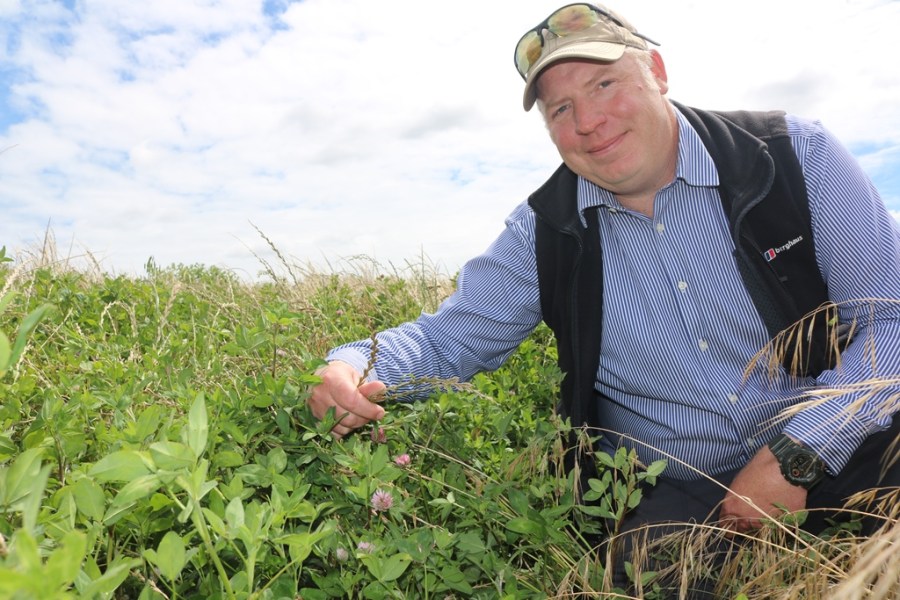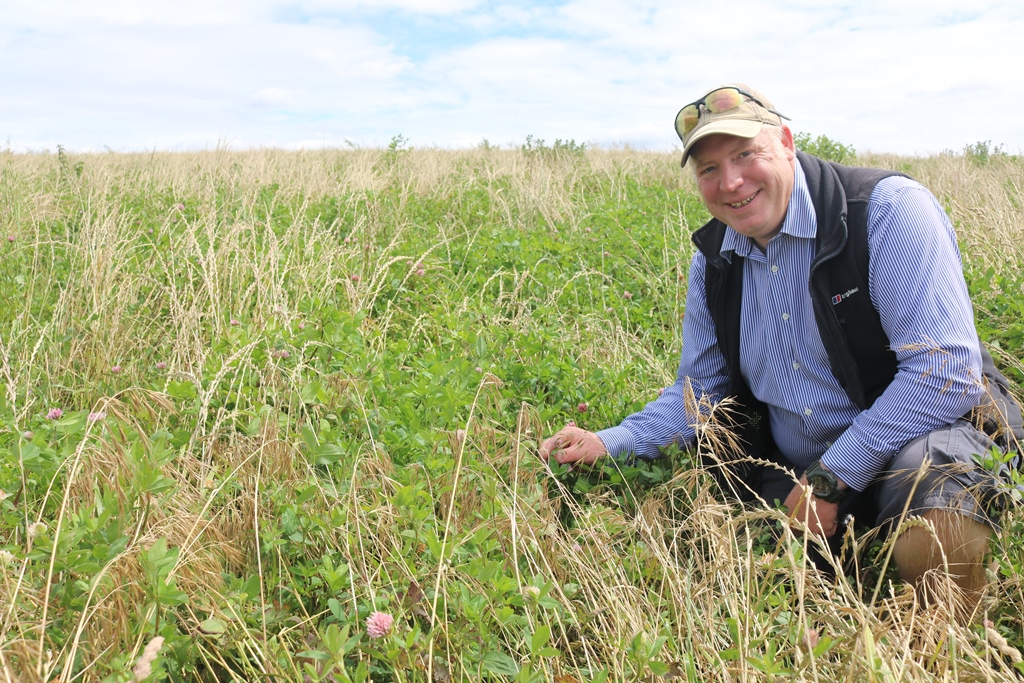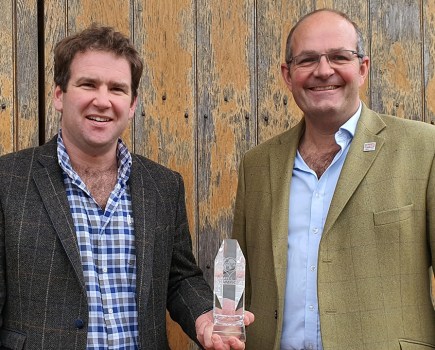A drive by his local water company to improve water quality prompted a Dorset grower to embark on a plan through Countryside Stewardship to deliver bold environmental goals. CPM visits to find out more.
I’m probably contributing more than my fair share, but then I’m well placed to do so.
By Tom Allen-Stevens
Butterflies and grasshoppers scatter as John Hawkins strides into his two-year sown legume fallow to inspect what to some growers would be a tangled muddle of biomass. To John, however, it’s a valuable resource for pollinators, has improved his soils, soaked up nutrients and importantly captured carbon.
“I hope what we’re doing here goes beyond mere conservation,” he says. “Regenerative agriculture is the aim. It’s not just about improving our own soils and sequestering carbon, but about making a difference for how agriculture impacts across the catchment.”
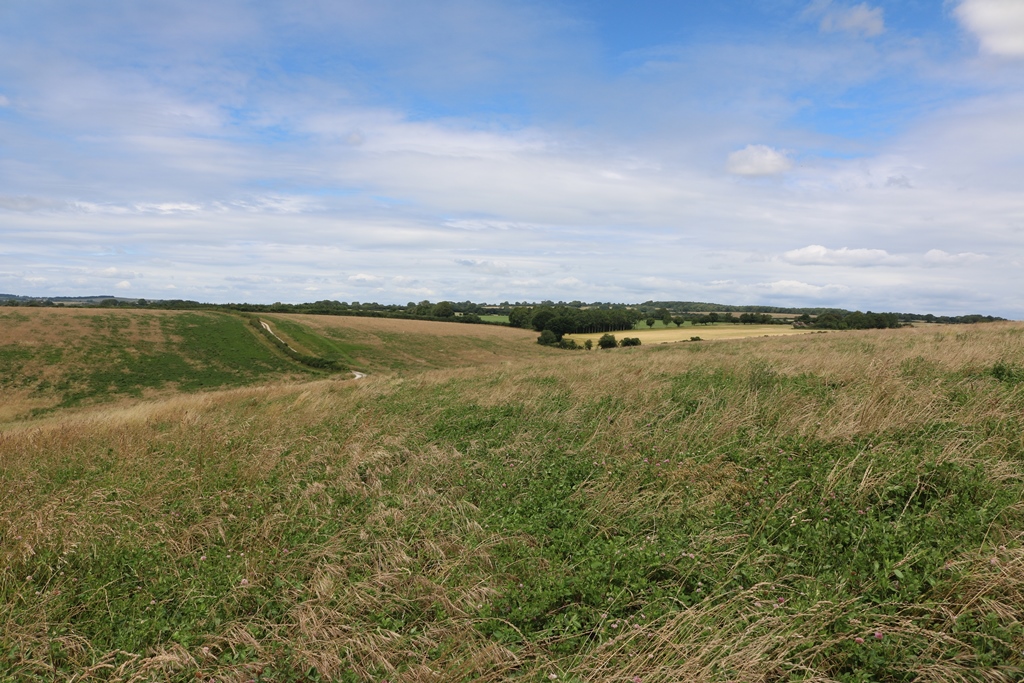
Various stewardship schemes across the steep slopes of Bagber Farm are harnessed to help lock up carbon and nutrients and provide rich resources for wildlife.
Bagber Farm comprises 239ha set into the clay loam soils over chalk that rise over 60m from rich valley bottom to thin hill top on slopes of up to 30° near Blandford Forum, Dorset. As such, it became one of many farms across a 200,000ha catchment approached by Wessex Water as part of a plan to improve the quality of the water feeding towards Poole Harbour.
“Initially my involvement in the scheme was purely financially driven,” explains John. “As a tenanted farm, our opportunities to expand are limited and I can’t see there are many ways to significantly increase yield or price in arable commodities. Equally, we’re constantly reminded of the polluter pays principle. So when a water company offers financial assistance and an alternative solution to reduce agriculture’s impact on water quality, you look on your role in a different light.”
The scheme rewarded John for putting land close to Wessex Water’s boreholes into arable reversion and cover crops. It proved an attractive use of fields that had relatively poor agricultural value and prompted John to look critically at the arable enterprise across the rest of the farm.
“We’re relatively good at growing malting barley, but wheat only makes £10/t profit and we’re propped up by subsidy,” he says. “I did a lot of background reading into the measures available through Countryside Stewardship (CS) and came up with a plan that was not only economically sound, it would deliver real improvements to the farm’s soils and environmental value.”
The agreement started in 2017 and resulted in 95% of the land going into CS – a bold step-up from the 5% previously in Entry-Level Stewardship. Around 200ha of the farm has been split into two blocks – one has been sown with a two-year legume fallow (AB15), while the other is cropped with cover crops and a low input cereal (AB14), bringing in a top-up payment of £266/ha. Smaller areas have also been sown with pollen and nectar mix (AB8) and wild bird cover (AB9), while John is also paid £632/t for supplementary winter feeding of farmland birds.
“We’re now in year three, getting the full value from the AB15, and this autumn this block flips into low-input cereal while the rest of the farm goes into the legume fallow,” he explains.
The difference that’s made is what John’s come to the field to explore. Although mid-summer, his trowel easily frees a clod of soil, complete with its mesh of fibrous roots. “It’s been completely unaffected by this season’s rain and drought,” he says. “The mix is around 60% ryegrass, and we’ve sown Westerwolds Italian ryegrass that behaves like an annual and is great for mopping up N. The vetch and clover in the mix have well nodulated roots that must be doing wonders for the soil.
“We kept it regularly topped in year one to suppress annual weeds, although we found the best way to control thistles was to roll, and if you top vetch too tight you kill it. The cover was left uncut this year and the wildlife value has been exceptional.
“I’m not worried about the grass seed as this will stay on the surface in our low-disturbance system. We can then destroy the cover any time between 15 Aug and when we establish the low-input cereal in March. The trick is to do so in a way that captures as many of the benefits we’ve now built in as we can into the following crop.”
While spring barley has provided most of the cereal area, John’s also been growing canary seed. There’s no wheat or oilseed rape in the rotation, so the choice of over-winter cover crop hasn’t been restricted, and that’s allowed them in the mix along with linseed and mustard.
“I was worried the low-input restrictions would tie my hands too much, but actually I’m quite pleased with the result – we’re producing quality and quantity from a very low-carbon input. The low-herbicide policy has also drawn me into relay cropping – I’ve broadcast the clover into the standing crop to kickstart this autumn’s legume fallow.”
Perhaps the biggest savings and environmental benefits, however, are coming from John’s new approach to cultivations. Since he returned to the farm in 2006, he’s pursued a min-till policy. Then in spring 2018, a 3m Simtech T-Sem strip-till drill was purchased to establish the first crop in the new regime.
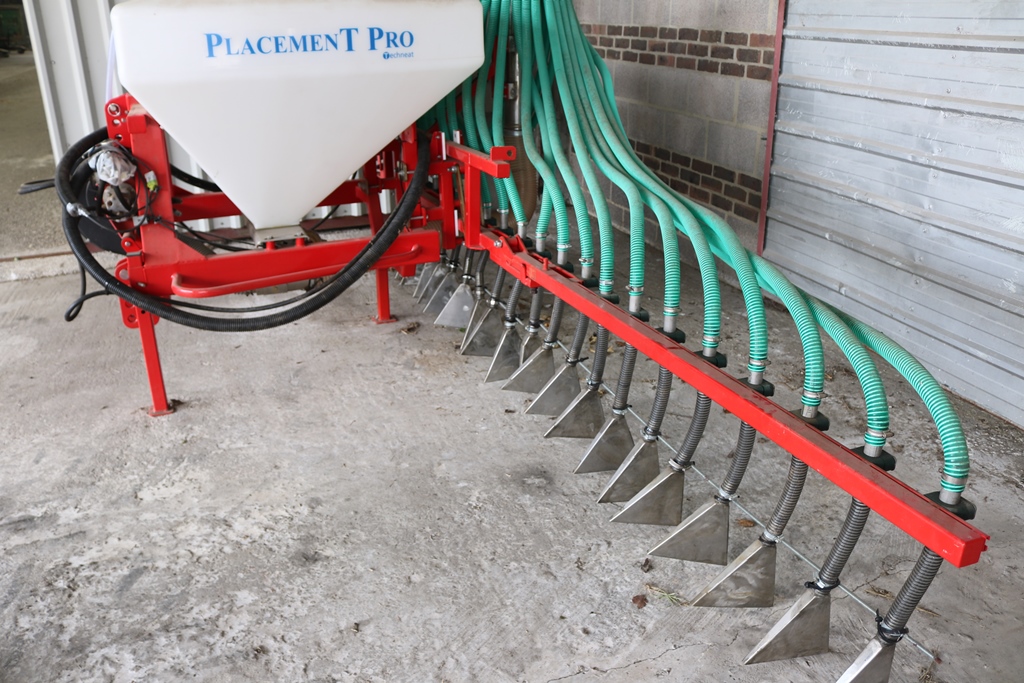
Fertiliser is precision-applied to the drill lines, typically doubling what the field rate actually delivers to the crop.
“It’s about accuracy,” John explains. “We aim to place everything in a 10cm channel at 18.5cm spacings and use RTK with sub one-inch accuracy. This goes for the seed that’s placed by the T-Sem shoe with minimum surface disturbance. Then we also precision-apply fertiliser to the drill lines – a typical field rate of 50kgN/ha delivers around twice that to the crop.”
Crucially, very little soil is disturbed, and that’s dramatically reduced horsepower requirement and diesel use, while the ground is much easier to travel. “We’re finding there’s much less compaction and wheel slip. This reduces erosion risk and run-off on our steep slopes. The other benefit is that fewer flints are brought to the surface which is making us rethink tyre design.”
The soil’s high flint content has always taken its toll on tyres, prompting John to head to the budget end of the market. But with less damage, he’s now looking to invest in tyre technology that will help reduce ground pressure.
“My focus has shifted to reducing compaction. There’s greater potential in early spring to damage soils, so we’re planning to equip the tractor with low ground-pressure tyres. An important aspect here is the need for precision on our sub-inch system. Wider tyres should allow more stability, but the tyre-wall design must be such that there’s minimal roll and yaw on our steep slopes. New flexion tyres, such as BKT’s Agrimax V-Flecto range, should offer that reassurance.”
The move is going hand-in-hand with a step down on tractor size. Previously, a New Holland TG285 was the minimum requirement to carry out the grunt work on the farm’s steep slopes. Nowadays, a 160hp model is all that’s needed, and even that’s only for a relatively short time of the year. “I’m planning to switch to leasing a new tractor from next Feb. This offers the opportunity to equip it with the latest technology to increase efficiencies, and better tyre design is a good place to start,” notes John.
Three years into the new system, the benefits are building, while the potential downsides of a low-input system haven’t materialised, according to independent agronomist John Virgin, who’s been with the farm since 1984.
“The AB15 did worry me, but I’m amazed at how it’s smothered the weeds,” he remarks. “We’ve kept to a very tight budget on the low-input cereals, which means you let things through, such as wild oats. That would be a worry in a conventional rotation, but the land comes out of production before any weed population has the chance to build.”
Yield on the spring barley has knocked back slightly to 6-6.5t/ha, while on high inputs it would be nearer 7-7.5t/ha. But the farm uses a third of its previous fertiliser requirement with a budget of just £100/ha for cereal chemistry.
Meanwhile, the wildlife flourishes, reports John Hawkins. “There’s a local falconer who’s been logging red list bird sightings – we have the maximum nesting and stocking density of skylarks and corn bunting which are spreading into our neighbours fields for nesting. Matt Heard, director of Natural England, came out and actually saw the pair of nesting hen harriers we’ve managed to attract to the farm. I’ve also run a comparison with our previous system through the Farm Carbon Toolkit, which reveals we’re now sequestering more than ten times the CO₂ we were previously, making the farm a considerable net sink for carbon emissions.”
It’s the same with nutrient capture – monitoring by Wessex Water has revealed the average leaching over the farm sits at 10kgN/ha and as low as 2.5kgN/ha, against an Environment Agency target of 24kgN/ha. Standard figures for a conventional late-drilled wheat crop after oilseed rape show it leaches around 60-100kgN/ha.
The farm sits in the Poole Harbour water quality ELM trial, so John reckons he’s well placed to benefit from the opportunities this will bring. “I’m probably contributing more than my fair share, but then I’m well placed to do so, while there a lot of large dairy farms in the catchment that would suffer more if they locked down their production,” he reasons.
“In terms of building carbon, we’re already at 6-8% soil organic matter, which is high for these soils. My aim is for 10%, and it’s in years 6-10 that the current system should really start to lock in the carbon, so these benefits will only carry on building as we refine the system.”
What makes John Hawkins a Climate Change Champion?
Innovative ideas
There’s a carefully thought-through and bold plan in place at Bagber Farm that’s combined long term stewardship goals for the farm with delivery of a wider objective for the catchment it’s in.
Productivity push
Through maximising the value the legume fallow brings to the soil, inputs to the following cereal crop can be cut to a fraction of what was used previously. Precision-application of fertiliser to the crop rows further enhances resource efficiency.
Cultivation care
One of the primary purposes of the legume fallows is to build soil carbon, while the move to strip-till drilling should ensure this is locked in place. The agroforestry venture complements tree-planting with productive agriculture.
Bio-based boldness
The farm’s biomass boiler displaces fossil fuel for energy use, and ensures the farm makes a healthy contribution towards reducing net emissions.
Innovation married with rich heritage can point the way on climate change
If there’s one thing farmers have mastered with their stewardship of the land it’s preserving the rich heritage of its traditions, believes Arvind Poddar, chairman and managing director of Balkrishna Industries (BKT).
“For BKT, our values represent the rich heritage of our traditions and today’s challenge is that of preserving continuity and transforming them into a lifestyle,” he states. “We know this cannot be achieved in the short term. However, it’s certainly important not to lose sight of this intent, creating an environment where these values are really oriented towards the common good.”
This is the purpose behind BKT’s own “Green Revolution” – a determination to decrease the company’s environmental impact and to set an example of how to pursue a more sustainable future.
So wind power and renewable sources contribute 40% of the energy that BKT uses, for example, and 50,000 trees were planted at the Bhuj production site, in the Indian state of Gujarat.
But within farming, there’s a key role for innovation, that sits side-by-side with preserving heritage, and that too lies within BKT’s Green Revolution. Such as its joint research agreement with leading US biotechnology company Kultevat to cultivate and process a renewable and sustainable alternative for natural rubber. Then there’s the development of tyres that respect and avoid compacting the soil, like the IF and VF products working at low pressures from the BKT’s Agrimax line for tractors or the Flotation line for trailers. And finally there is the use of new nanomaterials to improve tyre performance such as thermal or mechanical stability.
“John Hawkins has taken that same quest for innovation and married it with the rich traditions of stewardship farmers have always provided. What he’s forged is not only a system that improves on its own integrity and sustainability, but one that benefits others in his catchment, and provide an example for others to follow. That’s why BKT is pleased to support John’s quest to be Climate Change Champion 2020,” says Mr Poddar.
Climate Change Champions
UK Farming has set itself the challenging target of Net Zero emissions by 2040. Although led by the NFU, it will take the entire industry, working together in a partnership approach to meet this ambitious goal.
But there are individual growers, thought leaders who have already started on this journey. They have the ideas, the progressive outlook and the determination to shape positive change. CPM has teamed up with leading agricultural suppliers who have a credible Net Zero aspiration to identify these individuals and bring them into the top-level discussion about how farming can position itself as the solution to climate change. CPM readers will get the chance later this year to decide who will be awarded the accolade of Climate Change Champion 2020.
CPM would like to thank our sponsors:
BASF, BKT, CF Fertilisers, KWS, Fendt, Interagro, Pottinger, Small Robot Company

